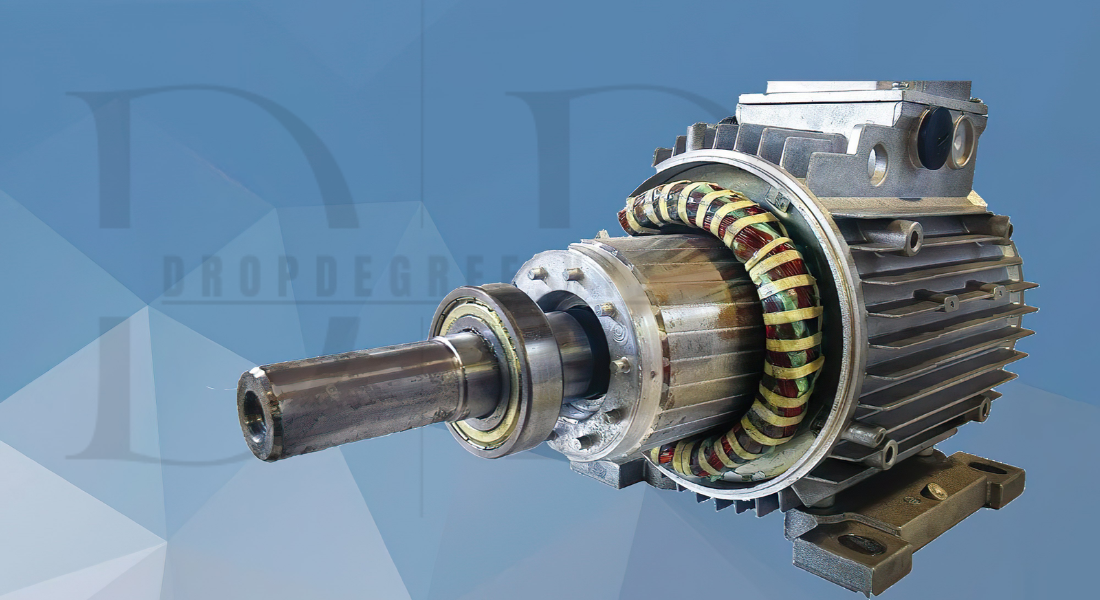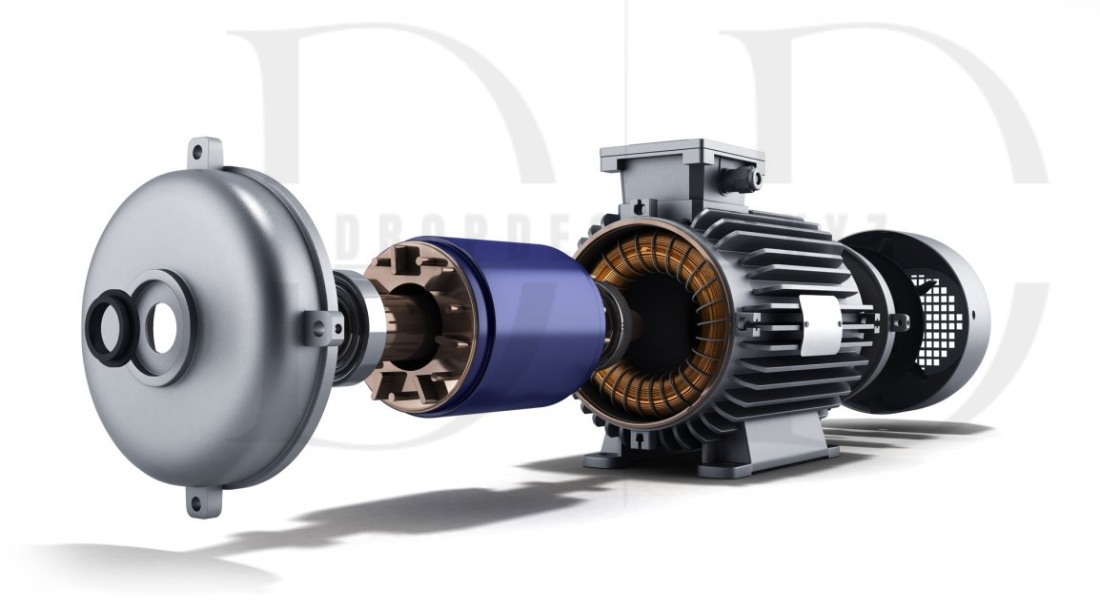The world is rapidly shifting toward greener and more efficient technologies. One of the key drivers of this change is the development of electric motor technology, which is transforming how we power everything from household appliances to electric vehicles. As industries across the globe look for ways to reduce their carbon footprint and improve operational efficiency, the electric motor has emerged as a vital component in the transition to a more sustainable future.
In this article, we will explore the evolution of electric motor technology, its current applications, and the groundbreaking innovations that are shaping the future. From enhancing energy efficiency to enabling eco-friendly transportation, electric motors are at the heart of this transformation.
1. Understanding Electric Motor Technology
Electric motors are devices that convert electrical energy into mechanical energy. They work on the principle of electromagnetic induction, where electric current flows through coils of wire, creating magnetic fields that generate motion. There are different types of electric motors, including AC (alternating current) motors, DC (direct current) motors, and specialized motors used in various applications.
Historically, electric motors have been used in countless devices, from small gadgets like fans and power tools to large industrial machinery. The growing demand for energy-efficient, sustainable solutions has led to significant improvements in electric motor technology, resulting in more powerful, compact, and efficient motors.
2. The Evolution of Electric Motors: A Brief History
The journey of electric motor technology dates back to the early 19th century. Pioneers like Michael Faraday and Nikola Tesla laid the groundwork for the development of electric motors. Faraday’s discoveries in electromagnetism in 1831 paved the way for the creation of the first electric motor. Tesla’s work in the late 1800s revolutionized motor design, especially with his development of the alternating current (AC) motor, which remains a cornerstone of modern electric motor technology.
Over the years, advancements in materials, design, and manufacturing techniques have significantly improved the efficiency and performance of electric motors. In recent decades, there has been a surge in research and development, focusing on making motors more compact, cost-effective, and environmentally friendly. This progress has allowed electric motors to find applications in areas that were previously unimaginable, from electric vehicles to renewable energy systems.
3. Key Applications of Electric Motor Technology
Electric motor technology is now ubiquitous across a wide range of industries. Let’s explore some of the key areas where electric motors are making an impact:
a) Electric Vehicles (EVs)
Electric motor technology is perhaps most widely recognized for its role in powering electric vehicles. Traditional internal combustion engines are being replaced by electric motors in cars, buses, trucks, and even two-wheelers. The adoption of EVs is rapidly increasing, driven by growing concerns over environmental pollution and the push for sustainable energy solutions.
Electric motors in EVs offer several advantages, including higher efficiency, lower maintenance costs, and a quieter driving experience. The latest advancements in electric motor technology have allowed manufacturers to produce motors with greater torque, enabling faster acceleration and longer driving ranges.
b) Renewable Energy Systems
The integration of electric motors into renewable energy systems is another area of significant progress. Wind turbines, for example, rely on electric motors to convert mechanical energy into electricity. Solar power systems also use motors to track the movement of the sun and optimize energy generation.
Electric motors are essential in optimizing the efficiency of these systems, enabling the generation of clean energy. With the rise of renewable energy sources, the demand for advanced electric motors that can handle the specific needs of these technologies is growing rapidly.
c) Industrial Automation
In manufacturing and industrial sectors, electric motors play a critical role in automation. From conveyor belts to robotic arms, electric motors drive the machinery that powers production lines. These motors are essential in reducing labor costs, improving precision, and increasing production rates.
The trend toward Industry 4.0, where automation, IoT, and smart technologies converge, is further accelerating the demand for advanced electric motors. These motors must be adaptable, energy-efficient, and capable of handling complex tasks in highly dynamic environments.
d) Household Appliances
Electric motors are integral to countless household appliances, from refrigerators and washing machines to vacuum cleaners and ceiling fans. As technology improves, these motors are becoming more efficient, smaller, and quieter. Energy-efficient motors not only reduce electricity consumption but also enhance the performance of everyday devices.
4. Recent Advancements in Electric Motor Technology
The field of electric motor technology has seen rapid advancements, particularly in terms of efficiency, power density, and integration with other technologies. Some of the most significant developments include:
a) Brushless DC Motors
Brushless DC (BLDC) motors are one of the most significant innovations in electric motor technology. Unlike traditional motors, which use brushes to transfer current to the rotating armature, BLDC motors eliminate the need for brushes. This design leads to higher efficiency, longer lifespans, and reduced maintenance costs. BLDC motors are widely used in applications like drones, electric vehicles, and power tools.
b) High-Efficiency Permanent Magnet Motors
Permanent magnet motors have become increasingly popular due to their high efficiency and compact size. These motors use permanent magnets to generate magnetic fields, reducing energy losses compared to traditional motors. High-efficiency permanent magnet motors are now found in various applications, including electric vehicles, HVAC systems, and robotics.
c) Smart Motors and IoT Integration
The integration of Internet of Things (IoT) technology into electric motors is transforming industries by enabling real-time monitoring and predictive maintenance. Smart motors can detect issues such as overheating, wear, or malfunction, and alert operators before problems escalate. This connectivity improves operational efficiency, reduces downtime, and prolongs the life of the motor.
d) Sustainable Motor Design
As environmental concerns rise, there has been a growing emphasis on developing sustainable motor designs. Manufacturers are using eco-friendly materials, such as recyclable metals and biodegradable lubricants, to minimize the environmental impact of electric motors. Additionally, the development of energy-efficient motors contributes to reducing carbon emissions and promoting greener industries.

5. The Future of Electric Motor Technology
The future of electric motor technology looks incredibly promising. As global demand for clean, efficient energy solutions grows, innovations in electric motor design and application are expected to continue to evolve rapidly. Some key trends to watch in the coming years include:
a) Ultra-Efficient Motors
Researchers are working on developing even more efficient electric motors that can reduce energy consumption to near-zero levels. These motors will play a crucial role in sectors such as transportation, industrial machinery, and home appliances, helping to reduce global energy demand and carbon emissions.
b) Advanced Manufacturing Techniques
The manufacturing process for electric motors is undergoing significant changes. Techniques such as 3D printing, automation, and AI-based design optimization are expected to reduce production costs, increase precision, and speed up the development of new motor technologies. These advancements will make electric motors more affordable and accessible across various industries.
c) Integration with Artificial Intelligence
The integration of electric motors with artificial intelligence (AI) and machine learning will enable more intelligent control systems. These systems can optimize the performance of motors based on real-time data, improving energy efficiency and reducing wear and tear.
6. Conclusion
Electric motor technology has come a long way since its inception and is now a cornerstone of modern industry. From revolutionizing transportation with electric vehicles to enabling clean energy solutions in renewable systems, electric motors are shaping the future. The continuous advancements in electric motor design, materials, and manufacturing will pave the way for even greater efficiency and sustainability in the years to come.
As we continue to rely more heavily on electric motor technology, it is clear that the future holds vast potential. The innovations and trends shaping this technology will not only benefit industries and businesses but also contribute to creating a more sustainable and energy-efficient world.
